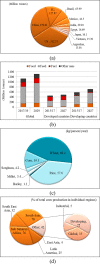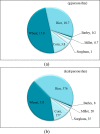Acrylamide in Corn-Based Thermally Processed Foods: A Review
- PMID: 35357820
- PMCID: PMC9011392
- DOI: 10.1021/acs.jafc.1c07249
Acrylamide in Corn-Based Thermally Processed Foods: A Review
Abstract
Widely consumed thermally processed corn-based foods can have a great contribution to acrylamide dietary intake, thus bearing a high public health risk and requiring attention and application of strategies for its reduction. This paper reviews the literature on the acrylamide content of corn-based food products present in the market around the world. The potential of corn for acrylamide formation due to its content of free asparagine and reducing sugars is described. Human exposure to acrylamide from corn-based foods is also discussed. The content of acrylamide in corn/tortilla chips, popcorn, and corn flakes, as widely consumed products all over the world, is reported in the literature to be between 5 and 6360 μg/kg, between <LOD and 2220 μg/kg and between <LOD and 1186 μg/kg, respectively. Although these products are important acrylamide sources in the common diet of all age populations, higher intake values occurred among younger generations.
Keywords: acylamide; asparagine; benchmark levels; corn-based foods; reducing sugars; thermal processing.
Conflict of interest statement
The authors declare no competing financial interest.
Figures




References
-
- International Agency for Research on Cancer (IARC) . Evaluation of the carcinogenic risks of chemicals to humans; IARC Monographs; International Agency for Research on Cancer: Lyon, France, 1994; Vol. 60, pp 389.
-
- LoPachin R. M.; Lehning E. J. Acrylamide induced distal axon degeneration: a proposed mechanism of action. Neurotoxicology 1994, 15, 247–260. - PubMed
-
- Salazar R.; Arámbula-Villa G.; Luna-Bárcenas G.; Figueroa-Cárdenas J. D.; Azuara E.; Vázquez-Landaverde P. A. Effect of added calcium hydroxide during corn nixtamalization on acrylamide content in tortilla chips. LWT - Food Sci. Technol. 2014, 56 (1), 87–92. 10.1016/j.lwt.2013.10.046. - DOI
Publication types
MeSH terms
Substances
LinkOut - more resources
Full Text Sources

